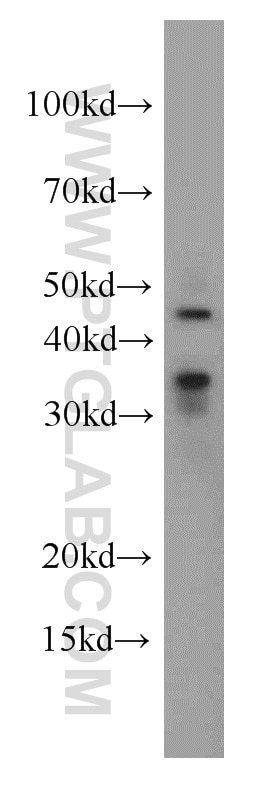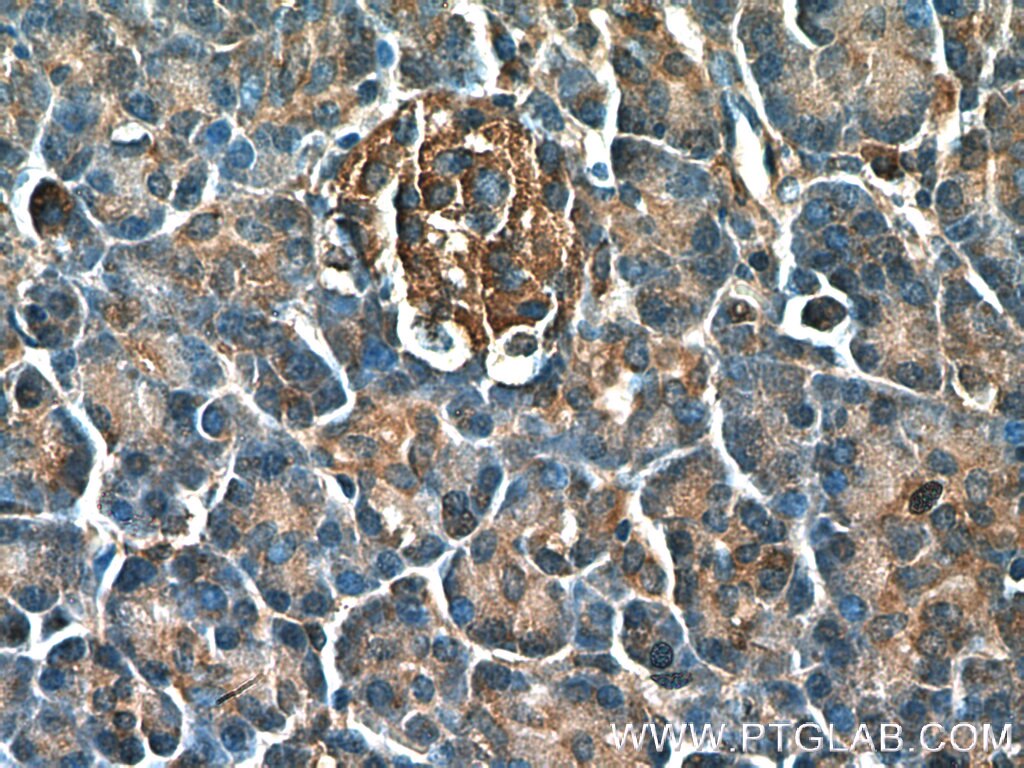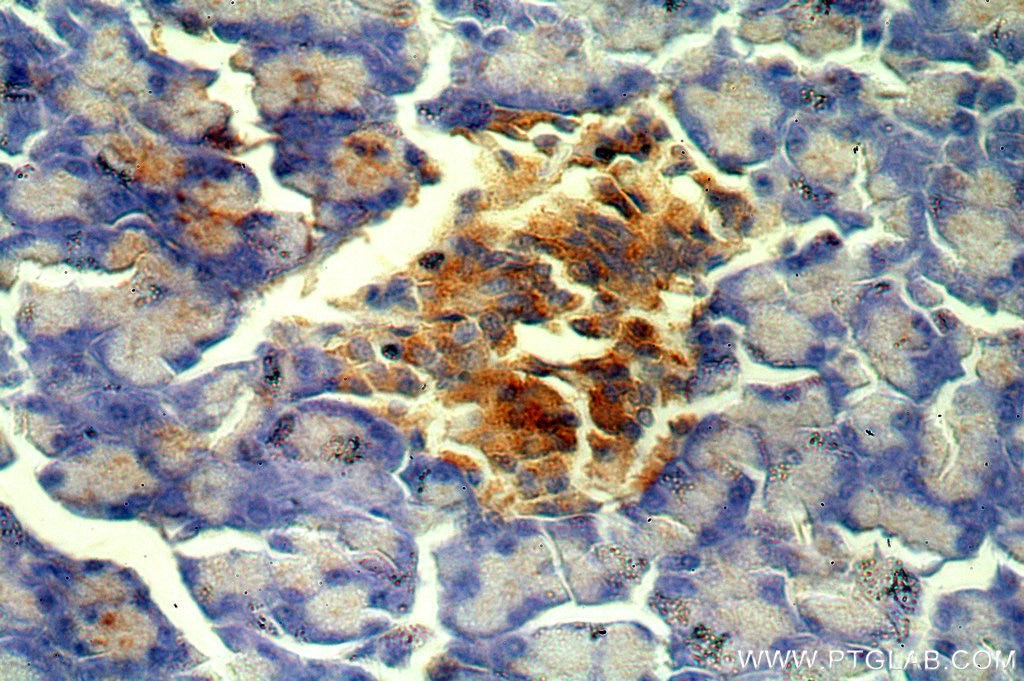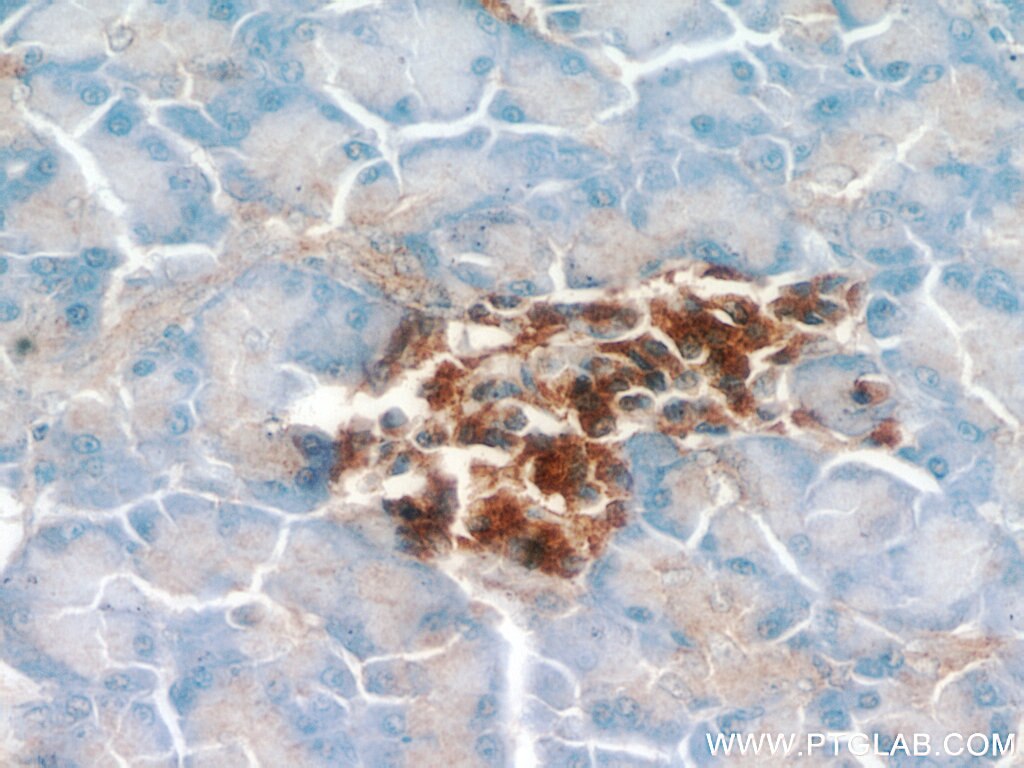Validation Data Gallery
Tested Applications
| Positive WB detected in | HEK-293 cells, mouse pancreas tissue, HepG2 cells |
| Positive IHC detected in | human pancreas tissue, human heart tissue Note: suggested antigen retrieval with TE buffer pH 9.0; (*) Alternatively, antigen retrieval may be performed with citrate buffer pH 6.0 |
| Positive IF/ICC detected in | HepG2 cells |
Recommended dilution
| Application | Dilution |
|---|---|
| Western Blot (WB) | WB : 1:500-1:1000 |
| Immunohistochemistry (IHC) | IHC : 1:100-1:400 |
| Immunofluorescence (IF)/ICC | IF/ICC : 1:50-1:500 |
| It is recommended that this reagent should be titrated in each testing system to obtain optimal results. | |
| Sample-dependent, Check data in validation data gallery. | |
Published Applications
| WB | See 3 publications below |
| IHC | See 1 publications below |
Product Information
20368-1-AP targets PHD2/EGLN1 in WB, IHC, IF/ICC, ELISA applications and shows reactivity with human, mouse samples.
| Tested Reactivity | human, mouse |
| Cited Reactivity | human, mouse |
| Host / Isotype | Rabbit / IgG |
| Class | Polyclonal |
| Type | Antibody |
| Immunogen |
Peptide 相同性解析による交差性が予測される生物種 |
| Full Name | egl nine homolog 1 (C. elegans) |
| Calculated molecular weight | 46 kDa |
| Observed molecular weight | 46 kDa, 36 kDa |
| GenBank accession number | NM_022051 |
| Gene Symbol | PHD2/EGLN1 |
| Gene ID (NCBI) | 54583 |
| RRID | AB_10695181 |
| Conjugate | Unconjugated |
| Form | |
| Form | Liquid |
| Purification Method | Antigen affinity purification |
| UNIPROT ID | Q9GZT9 |
| Storage Buffer | PBS with 0.02% sodium azide and 50% glycerol{{ptg:BufferTemp}}7.3 |
| Storage Conditions | Store at -20°C. Stable for one year after shipment. Aliquoting is unnecessary for -20oC storage. |
Background Information
EGLN1, also named as PHD2, SM-20, HPH-2 and HIF-PH2, catalyzes the post-translational formation of 4-hydroxyproline in hypoxia-inducible factor (HIF) alpha proteins. It hydroxylates HIF-1 alpha at 'Pro-402' and 'Pro-564', and HIF-2 alpha. EGLN1 functions as a cellular oxygen sensor and, under normoxic conditions, targets HIF through the hydroxylation for proteasomal degradation via the von Hippel-Lindau ubiquitination complex. Defects in EGLN1 are the cause of erythrocytosis familial type 3 (ECYT3). EGLN1 has 3 isoforms with MW of 46 kDa, 44 kDa and 36 kDa produced by alternative splicing. It mainly localizes in cytoplasm and can shuttle between the nucleus and cytoplasm (PubMed:19631610). The antibody is specific to EGLN1.
Protocols
| Product Specific Protocols | |
|---|---|
| IF protocol for PHD2/EGLN1 antibody 20368-1-AP | Download protocol |
| IHC protocol for PHD2/EGLN1 antibody 20368-1-AP | Download protocol |
| WB protocol for PHD2/EGLN1 antibody 20368-1-AP | Download protocol |
| Standard Protocols | |
|---|---|
| Click here to view our Standard Protocols |
Publications
| Species | Application | Title |
|---|---|---|
Oncogene iASPP is essential for HIF-1α stabilization to promote angiogenesis and glycolysis via attenuating VHL-mediated protein degradation. | ||
Am J Pathol Genetic Loss of HIF-Prolyl-Hydroxylase 1, but Not Pharmacological Inhibition, Mitigates Hepatic Fibrosis | ||
Asian J Androl CHD1 deletion stabilizes HIF1α to promote angiogenesis and glycolysis in prostate cancer |













